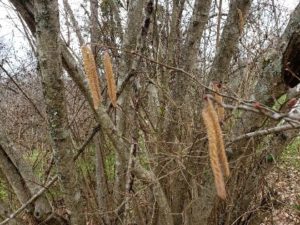April 23rd
Earth Day Edition
Finding your own special place
Ever since I was a kid, no matter where I live, I have found my own special places outdoors where I can go when I feel like I need some time to myself. We all sometimes feel that we just need time to ourselves to think, to feel, and to reconnect with the earth that keeps us alive. I visit these places several times a week, visiting for at least 15 minutes, and sometimes much longer. I stay until my breath comes in long, slow pulls, and I feel myself start to relax. Only then, do I begin to notice the sounds of birds and insects, and feel the warmth of the sun and the gentle breeze on my skin.
My eyes begin to see things differently, too. From where I sit, I notice that there are many plants besides grass growing from the soil. I notice that in some places, the soil looks dark and in others it is light and sandy. If I sit still, I begin to see insects moving through the soil. This might be my favorite time, because when I notice the bugs, I know I am really beginning to pay attention.
Because I visit often, I see that things change from one visit to another. Sometimes I want to try to find the names for things I see and hear; other times I want to observe in a different way. I may bring a pad and pencil, to draw what I see. Sometimes I want to write the thoughts that run through my mind, because I think differently here.
As I come to know the place well, I fall in love with it. Once that happens, I become its keeper. If I see trash, I pick it up. If I pick something up for a closer look, I put it back right where I found it. I don’t want to leave any sign that I was there, because this place belongs to all the plants and animals that live here, not just to me.
Yesterday was Earth Day, a day to remember that our lives depend on the earth. This week, I hope you will find your own special place outdoors. Maybe, like me, it will help you think with both your head and your heart.
Caregivers and educators, by following this link, you can read more about the value of Earth Day, every day. https://forestryoutreach.berea.edu/…/23/earth-day-every-day/

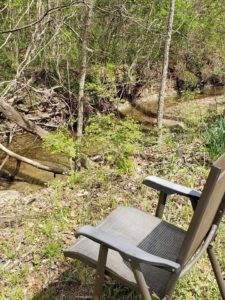
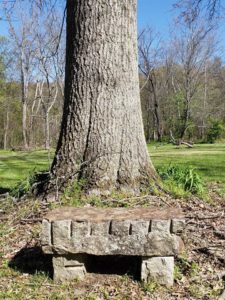
April 16th
Happy Thinking Thursday! Each of us at the Forestry Outreach Center is making a point to get outside every single day to see what we can learn from and about the world around us. We hope you are doing the same. Remember that learning doesn’t only happen in school…it can happen everywhere, all the time. All you need to do is ask questions and then learn different ways to try to find answers.
Every time I go out, I come up with new questions, new things that I wonder about. I’ve attached a few photos of things that raised questions for me. In fact, I can think of lots of questions about each photo. Perhaps questions will for you, too. I sometimes use them to play a game of “What happened here?
Sometimes my questions are about plants or animals I want to try to identify, like a bird or a tree. I also often wonder about how a plant or animal got its name, and who decided how to name it.
Sometimes my questions will be more complicated, as I wonder how one thing affects another. I wonder, for example, how long it might take for the earth to break down pavement once people aren’t using it anymore. I wonder, too, about how ants work together as I watch one carry something back to its anthill. Or I’ll find a fossil in rock and wonder what it is, how old it is, and when it got there.
And sometimes when I’m outdoors, I’ll wonder about a problem I’ve heard about on the news, like climate change or polluted air or water, and I’ll want to learn more about that. I often wonder why some people say something is a problem when others say its not. Knowing that people think about problems in different ways gives me plenty to explore and think about.
Or I ask: I wonder what would happen if…and then I fill in the blank. What would happen if all the earth’s rich topsoil erodes into the rivers and oceans? What would happen if we cut down so many trees that it made oxygen levels drop? These questions can guide my learning to help me think about ways I can help solve or prevent a problem.
It feels good to be learning toward a solution. In fact, this is the only way people have ever imaged solutions. If they can do it, why not you or me? I learned from an author named Zoe Weil that one way to find problems to solve is to ask 4 questions: What challenges in the world most concern me? What do I love to do? What am I good at? What do I need to learn?
Then she suggests finding solutions that do the most good and the least harm to the earth and all its beings.
I also wonder about things that are happening right now. Right now, I’m interested in learning about viruses like Covid 19, for example, what they are, how they spread, and why some viruses are more contagious than others.
Thinking Thursday might be a day for you to explore some questions you have. Once you catch on to guiding your own learning this way, you can never be bored again!
Caregivers and Educators, you can learn more about the source of some of these ideas on the accompanying blog. Just click here: https://forestryoutreach.berea.edu/2020/04/15/3558/
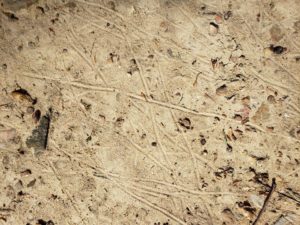

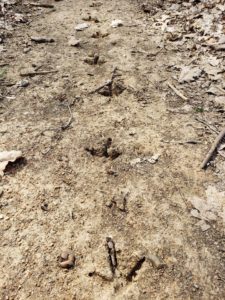
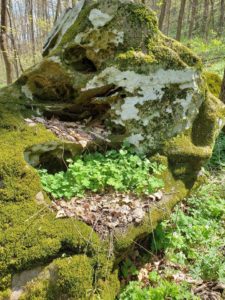
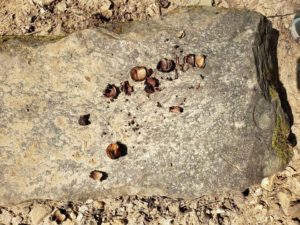
April 9th
Thinking Thursday: More Divergent Thinking
While you are staying “Healthy at Home,” you may notice your family is shopping less and being more careful not to waste food. I hope last week’s Thinking Thursday is helping you find interesting ways to REUSE materials you might have thrown away. The earth would be grateful if our REDUCE and REUSE habits would continue even after we can go to stores again!
This week let’s practice divergent thinking in a different way. Try this: Look out a window or step outside. Imagine away all the houses, all the stores and any other building you can see. Now, imagine away the roads, the telephone poles, the electric lines…and everything else that is made by humans.
Now, let’s say you wanted to meet a friend. How would you tell them where to find you? How might you describe or map your meeting place?
How would you meet your basic needs of food, water, and shelter? Where could you find water and food, and how might you create shelter? What other tools might you need to make your life easier and more comfortable?
Did you know buffalo used to roam Kentucky? I’ve posted some photos of useful items people have made from different parts of a buffalo. See if you can figure out what part of the animal it is, and what it was used for. If you click on each photo, there will be a place you can share your thinking.
This is the kind of divergent thinking people have used, and some still use, in order to survive. People learn how to live on the earth by carefully watching everything that happens. Observing the earth was a very important way to learn. Many generations of people learned and lived this way right here in Kentucky. When people live this close to the earth, they know how important it is to also care for it—to keep it clean and healthy—because our lives depend on it. Do some research to find people who continue to live this closely to the earth. You can post what you learn in the comment section below.
(Note: photos were taken at Chief Dull Knife College in Lame Deer, Montana, and published on a calendar produced by Full Circle Curriculum and Materials)
Blog post here: https://forestryoutreach.berea.edu/2020/04/09/thinking-thursday-april-9/

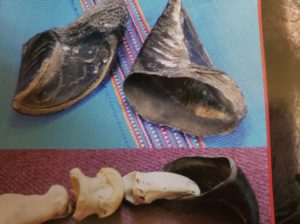
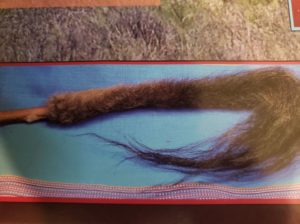
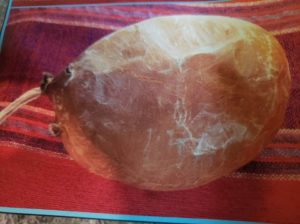
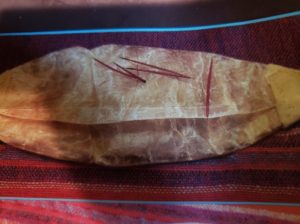


April 2nd
Thinking Thursday: REDUCE, REUSE, recycle: divergent thinking part 1
Right now, with most of your family at home, you’re probably producing a lot of trash. Trash companies are having a hard time keeping up, and recycling has slowed ever further. You’ve probably heard the phrase “REDUCE, REUSE, recycle.” But has anyone ever told you that to treat the earth well and help it recover from damage, we should think about it in that order? In fact, recent reports have shared that the plastic industry has pushed recycling so that we would feel better about our continued use of plastics.
One way to REDUCE what you need to buy is to REUSE the things you would otherwise throw away. This takes some creative thinking, and it’s the kind of thinking we’ll invite you to do this week. This is also stretch your brain to do an important kind of thinking called divergent thinking. To diverge means to go in a different direction. Divergent thinking, then is allowing your brain to go a different direction so it can come up with a new idea. People who come up with inventions and new ways of doing things use divergent thinking.
In the photo below, I used divergent thinking—and some trash—to try to solve a problem. Can you figure out what problem I was trying to solve? It didn’t work right at first. I put on one layer of plastic at a time. The first two layers didn’t solve the problem. I kept watching, trying to figure out why it wasn’t working. Finally, I added the top layer and cut the plastic on the top tow layers so it would flap around. Since then….problem, solved. So sometimes you can REUSE things, like trash, in ways that solve a problem.
In the photos below, I have taken photos of some of the things that I might throw away, unless I find ways to REUSE them. You might think of some ways they might solve problems around your house, especially as we’re not able to go shopping as much. Think of this as a game. You’re allowed to change the things any way you want to, like I did by cutting the plastic above the bird feeder. In the comment section below, name one of the objects—and share an idea for ways you might REUSE it. Let your imagination go wild! Maybe you’ll come up with a whole new invention!
We also invite you to post photos of ways you might have found to REUSE some of the trash around your house. If you get good at this, you can buy and throw things away much less than I used to!
Parents and educators can follow this link to read our blog post about the importance of practicing divergent thinking https://forestryoutreach.berea.edu/…/fostering-divergent-t…/
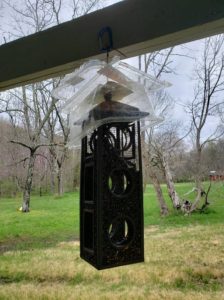
March 26th
For this week’s Thinking Thursday, become a nature detective!
When you go out into the natural world and begin to really look, as last week’s Thinking Thursday suggested, all kinds of questions probably come to your mind. This week, we invite you to become a Nature Detective.
Last week, I went for a long walk in the woods. I took a number of photos, which I’ve posted here. I’ve asked some questions about each, which I’ll post in the comment section beneath each photo. To find the questions, click on the photo. Once someone has posted an answer….see if you can dig even deeper. If, for example, someone’s answer was “an insect,” ask another question. It might be, “what kind of insect?” “What does it eat?” Let’s keep the questions and answers going as long as we can for each photo and see how much we can learn.
We also invite you to also post your own photos in the comment space below this post and share your questions about them. Let’s see if, together, our learning community can come up with answers.
If you can’t get outside, you can also try this: Look at the photos posted lately on the Forestry Outreach Center’s FB page. Some provide information for you, but I’ll bet you can still come up with plenty of questions about them. See if you can find answers—by observing outdoors or researching online or talking with people—and post your question and answers below any photo. This is a great way for us to form a community where we can all learn together.
PARENTS, learn more about inquiry-based learning and learning communities by reading the newest blog post on the Forestry Outreach Center website by clicking this link: https://forestryoutreach.berea.edu/…/why-inquiry-based-lea…/
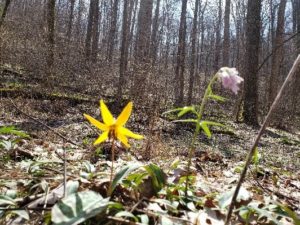
March 19th
Welcome to Thinking Thursday with the Berea College Forestry Outreach Center! Every Thursday, we’ll share a post designed to spark your curiosity and invite you to post what you notice, questions that it brings up for you, and what you learn as you research or experiment.
This week, we invite you to explore the wonders of your own backyard or a nearby park. If that doesn’t seem so wonderful, maybe it’s time to look again with new eyes. Here’s this week’s challenge:
Spend 10-15 minutes or so watching what happens in your yard. Try this for a whole week. If it’s raining, you can just look out the window. Observe what’s moving—and what’s not. Do you see any animals? Insects? Keep watching. Allow questions to arise. I wonder what kind of tree that is? How can I tell if there are no leaves on it yet? What’s that squirrel eating? How many birds can I count in 10 minutes? What kinds of flowers are blooming in the lawn? What’s the green stuff on the trees? Why do some of the trees still have dead leaves on them? Which direction is the wind blowing? How can I tell? How can I tell how much rain has fallen?
Choose a question you’re really curious about and think of some ways you might find an answer. But don’t stop with one answer. Try another source of information and see if that answer is the same. Then let that answer lead you to more questions….and keep going. It might be a good idea to start a notebook to keep track of what you learn on Thinking Thursdays!
We invite you post a photo of something you noticed or a drawing or a piece of artwork you created that let’s us “see” it, too. Then write or post a short video to share what you learned about it. Let’s see if we can keep this thread going all week. We can’t wait to see what we can learn from all of you!
Parents: For more information about Inquiry-based learning, follow this link to a blog post on the Forestry Outreach Center website for more information. https://forestryoutreach.berea.edu/…/…/18/lets-get-curious/…

